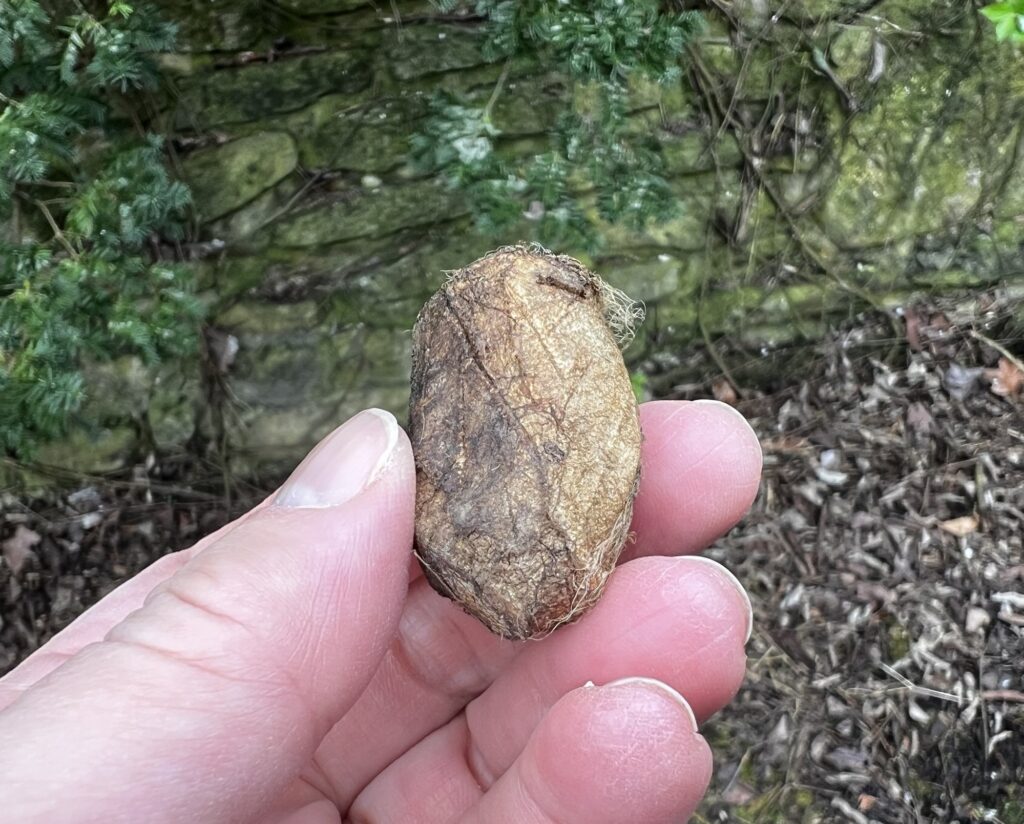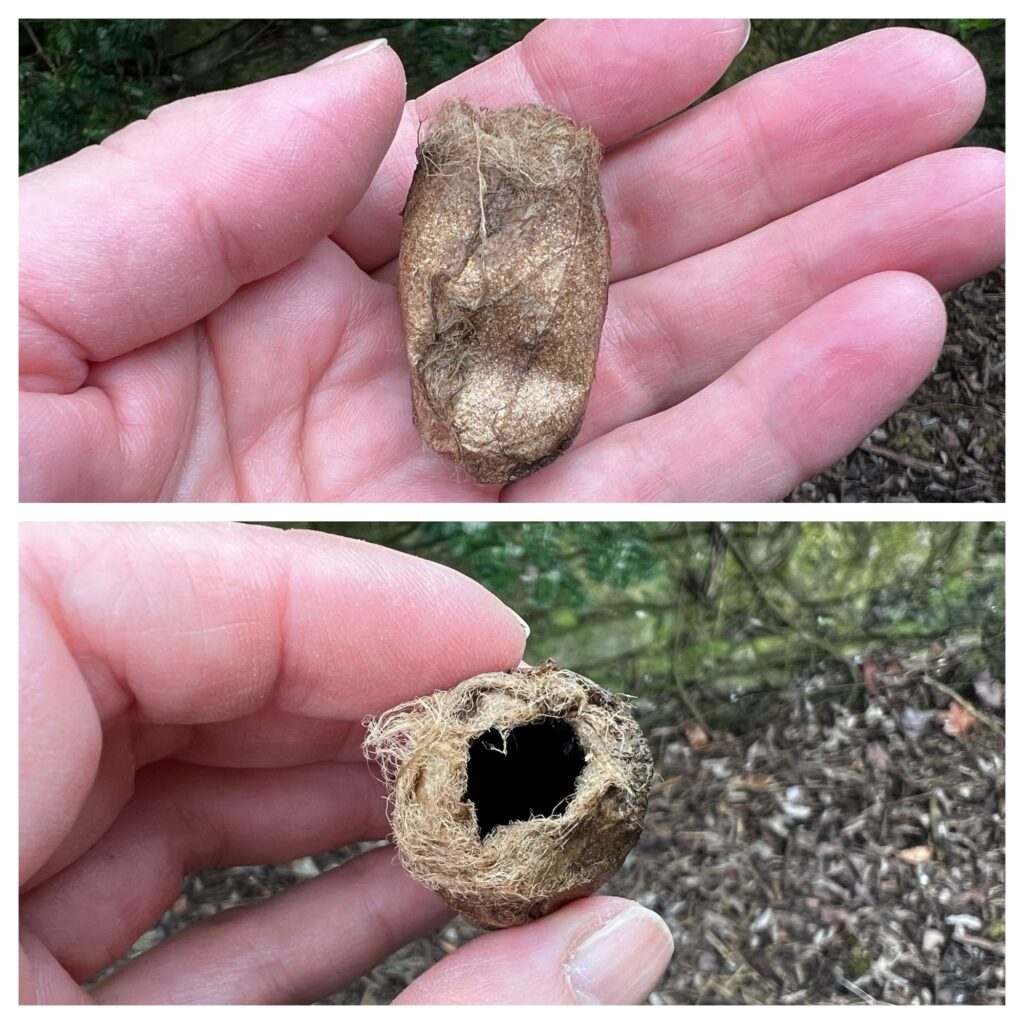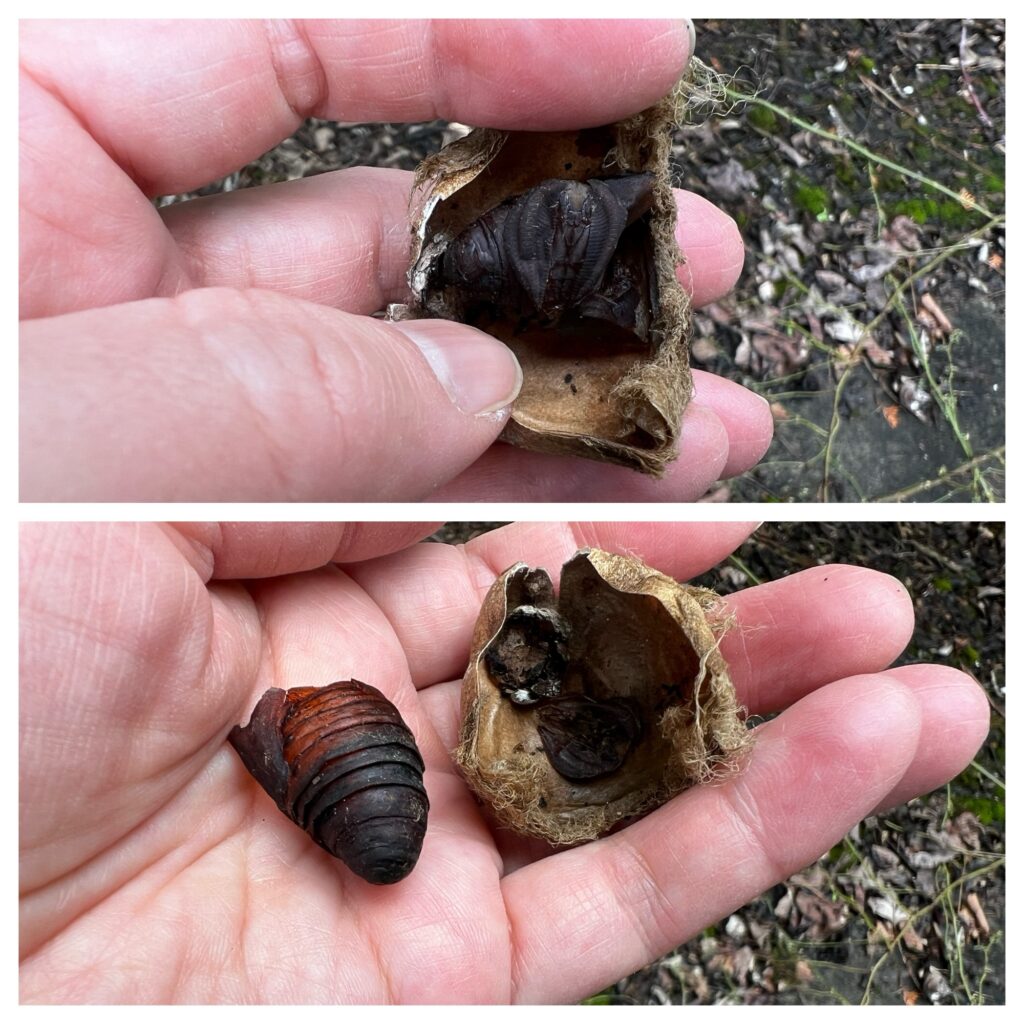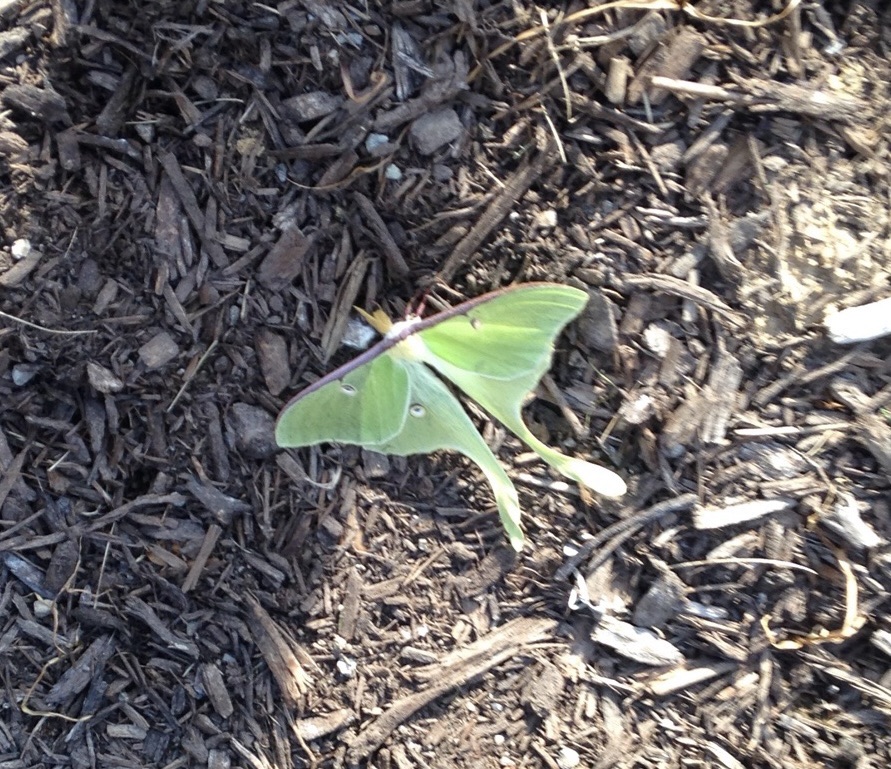
The universe – or Mother Nature? – has an incredible way of snapping us out of our own self-absorbed reveries and grounding us in the present. Today, as I finished the morning chores and was hosing off my boots, I looked down and noticed that there was some kind of pod nestled in the grass. It was the same color as the grass, but the oblong shape drew my attention. I needed to find out more about this strange object.
I find that when I have a daily routine, I sometimes get into a “flow” where I almost reflexively perform the tasks that are a part of the routine without really thinking about them…without really being in the moment. I might actually be thinking about other tasks to which I need to attend, mulling over quotidian concerns, or simply pondering the meaning of life. Mental wanderlust?
We, as a society, expect people to multi-task and praise them for it, but when we do multi-task, we cannot give our full attention to any of the tasks we’re trying to accomplish. Unsurprisingly, the results are usually less than hoped-for. In failing to realize that we do best when we can give our entire focus to a single task at hand, we set ourselves up for frustration and outcomes that fall short of excellence. In some settings, it can even be dangerous.
So where does the mystery pod come into this? Finding the pod was an shining reminder – like a flashing neon sign – that there is wonder all around us just waiting to be seen. Nature provided a little mystery, to be enjoyed (because I love a good puzzle) and to educate.
In examining the outside of the pod, I realized it was not a seed pod, as I had first suspected. At this time of year, seed pods often tend to be hard or brittle, and dry. This pod was dry but strangely soft, like fabric, with a vaguely “leafy” pattern. I tried to widen the hole that was already in the pod to get a better look inside, but it was shockingly tough – in fact, too strong to tear. The outside seemed to be made of a very tightly-woven, fabric-like, material.

As I peeked into the hole in the pod, I could just see a little bit of what looked like some kind of skin, like the “skin” or “shell” left behind when a cicada molts (called exuviae). It was dark in there, so I got my trusty shears and carefully cut along the side of the pod. Opening the pod confirmed that what I had seen was, indeed, the left-behind “skin” of a creature that had undergone a transformation inside its protective pod and had emerged into the world…as something completely new and unrecognizable. The pod turned out to be a cocoon, inside which a larval moth had pupated. And, judging by its escape hatch, successfully.

So are you wondering what kind of moth emerged from the cocoon? Me, too. My research (because I’m the researching type) leads me to believe that it’s a Giant Silkworm Moth, most likely a Polyphemus or perhaps even a Luna moth. Though both are lovely to behold, my secret hope is that it was a Luna moth. I’ve only seen a live one once, when I first moved to this area. Luna moths are unique in coloring, shape, and size – very large moths – and aren’t seen that often because, as adults, they’re nocturnal and have short life spans (as short as a week). As you’ve probably already surmised, it is a special treat to see a live Luna moth, and the experience is unforgettable. Is it a coincidence that we just had a full moon, too?

When you’re outside, don’t forget to really see what’s around you, including what’s at ground level – sometimes the extraordinary is tiny, camouflaged, or easily-overlooked. There are opportunities for awe nearly everywhere.
